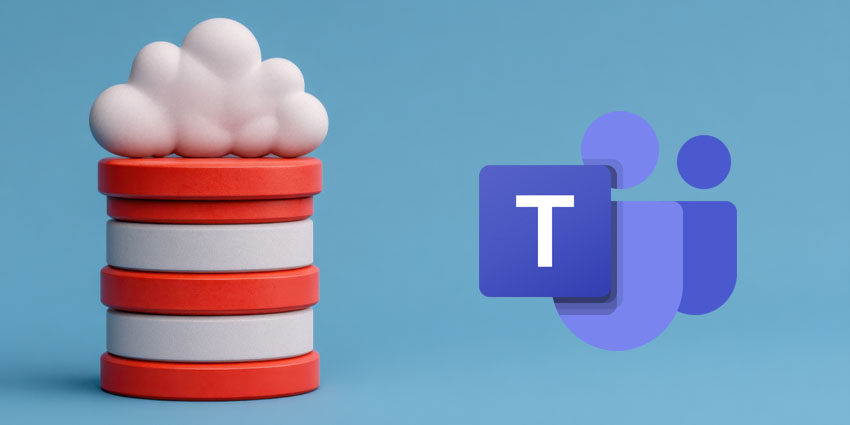By all accounts, 2020 has been a long decade. Nearly a year into the COVID-19 pandemic, businesses around the world have undergone seismic shifts in how they operate, forced to rethink many of the basics that were once a given.
After the initial Spring and Summer months of shock — where companies sought out solutions for how to keep the lights on and phone calls being answered — as they moved their employees out of the office to remote work, the colder months are bringing about a reckoning that we are not going back to the work environment that we knew before.
The Great Scramble of 2020, as I’ve taken to calling it, is essentially over. Companies are now moving on to Phase II, making the shift from just surviving to figuring out how they can thrive in the new era of work. A major component of this shift is happening in how forward-thinking organisations are looking to harness the cloud-based technologies that they have adopted during the first stage of the pandemic to work smarter moving ahead.
One of the most interesting spaces where we are seeing the greatest amount of change is in the contact centre space. To understand the significant changes that this industry is undergoing, we caught up with a team of experts from CallTower to get their perspective on the shifting trends that they are seeing with their customers.
Closing the Knowledge Gap for the Contact Center
As face-to-face interactions have grown riskier in the pandemic, contact centres have stepped up as the primary point of contact between businesses and their customers. Their ability to provide superior service plays a critical role in customer satisfaction and retention, making them a top priority, even as companies have had to make adjustments to keep them running safely.
“Overnight, we asked all our employees to go home and work from home,” recalls Bret England, CallTower’s CEO. “We had to provide them the tools to do their jobs, and the tools shifted from a hand based phone to a computer with the same applications loaded in all the computers.”
In making the shift to a fully remote environment, England says that they turned to the cloud-based Microsoft Teams solutions for their business communications. “At the time we were using Skype as our telephony platform along with Cisco solutions. But we have adapted fully to Teams as conferencing, as telephony, as a PSTN. Basically, we, like most other businesses, leverage Teams across the organisation because it allows us to collaborate on a single platform that is available from wherever we are.”
Now fully situated on Teams as an organisation, CallTower and many others out there are looking for new ways to build on their use of Teams to serve other business needs. Part of that effort revolves around filling in the gaps for what Teams does not offer, which includes features like Direct Routing and contact centre solutions.
One of the major challenges that has become glaringly apparent as contact centres have become more critical to a company’s success in retaining happy customers, is bridging the gap between the contact centre and the knowledge base that resides in the rest of the company.
To a great extent, contact centres have been islands separated from the mainland of the company where the subject matter experts reside. The impact of this siloing of expertise is that even as intelligent, hard-working agents answer calls to the best of their ability, they may lack the specific knowledge for answering customer questions. Up to this point, the solution to these cases has been to take the customer’s information and then get back to them later once the expert has been consulted.
The problem is that customers want a resolution to their concerns promptly when they call the contact centre. Not tomorrow, not next week, but when they make the call. Unfortunately, agents have not had a way of identifying who the right person to speak to is in real-time. Until now.
CallTower’s integration for Microsoft Teams with Five9 enables contact centres to enable Agent-Expert Consultations. Using the integration, agents can look within Teams to find experts in the right department whose presence shows that they are available to provide assistance. Having identified the appropriate expert, the agent can converse one-on-one with the expert, conference the expert into the call with the customer, or simply transfer the customer on to the expert to resolve the question. No matter which option they choose, the customer is able to get the answer they need on their first call, which is the goal.
“This integration with Five9 allows us to build a bridge between the contact centre and the back office,” says Doug Larsen, CallTower’s Senior Director of Software and Product. “We’re helping them to close the knowledge gap to provide better customer service.”
The Future of Work is All About Flexibility
Asked where the contact centre is heading next, CallTower’s England replies without missing a beat that the next stage is acceptance of hybrid work as the new reality for work.
Even once the vaccines (hopefully) allow for a return to the office, England notes that there are any number of factors that may force businesses to fluctuate between the office and remote work. Therefore, they need to continue to embrace tools that will allow them to move seamlessly between the two environments, causing minimal disruption to the flow of work.
Companies seem to understand that this is the way of the future and are adjusting accordingly. CallTower’s CRO, William Rubio, points out that he is witnessing organisations shifting their existing budgets towards supporting stronger capacity by building for remote work.
“They’re moving more into unified communications, including CCaaS, because it’s a necessary means now going forward,” said William Rubio, CallTower CRO.
In order for companies to succeed in the hybrid work environment, they need to draw from numerous solutions that address their needs. No single vendor offers an end-to-end package.
As an integration platform, CallTower can incorporate a wide range of solutions for their clients, all through them as a single provider for support and billing.
“There’s a massive move to Microsoft Teams, but it doesn’t have the contact centre solution. Five9 is a Gartner Magic Quadrant leader, but they don’t have a telephony solution,” England tells UC Today.
“What CallTower provides is an integration with best-of-breed technology. Our customers have one place they go to manage that integrated solution. We take the best and we stitch them together, providing our customers with solutions to what meets their needs”







